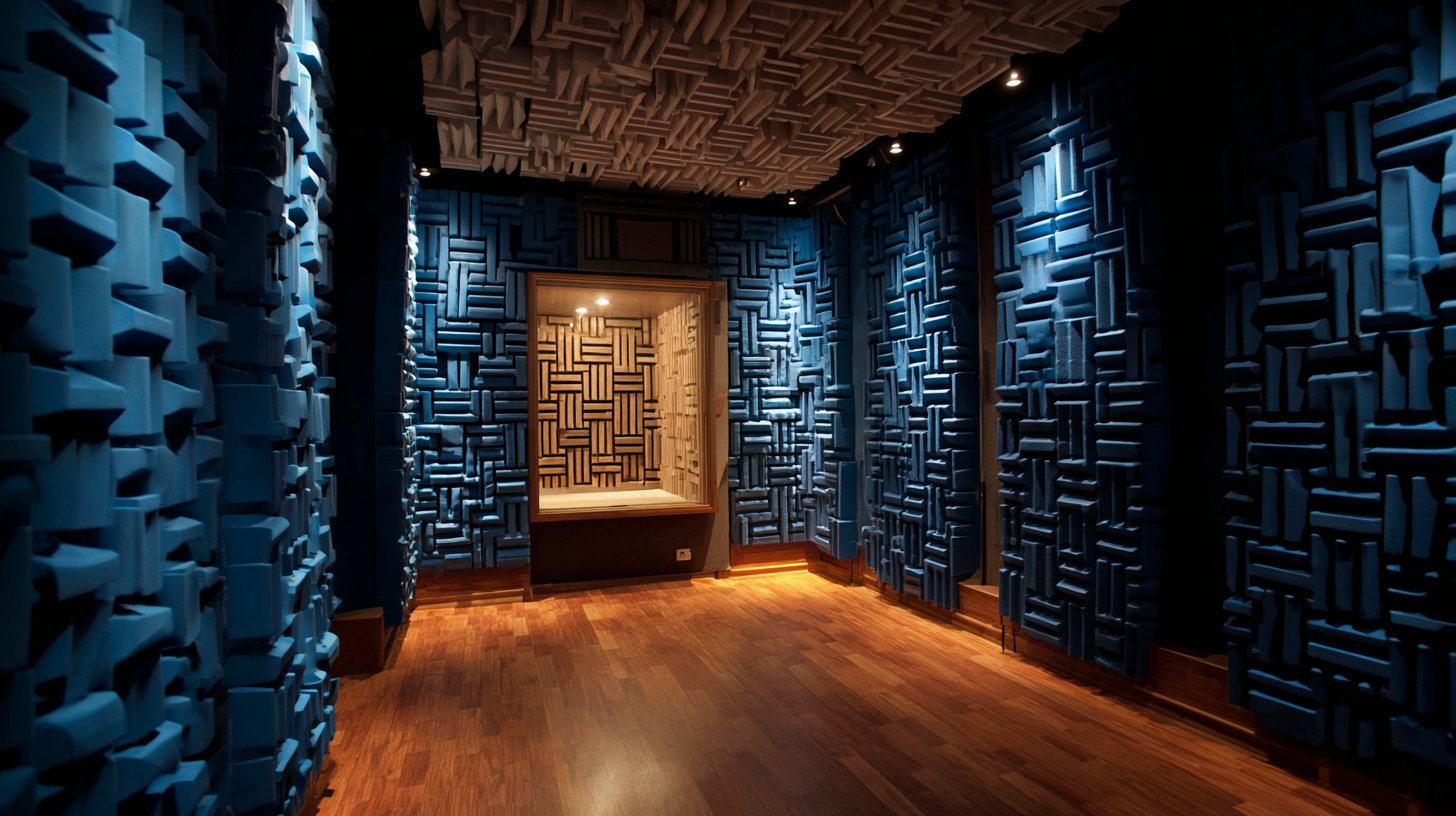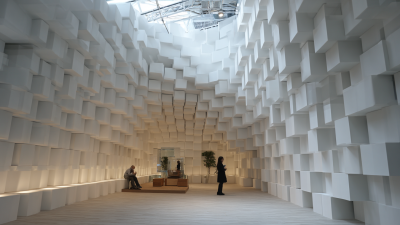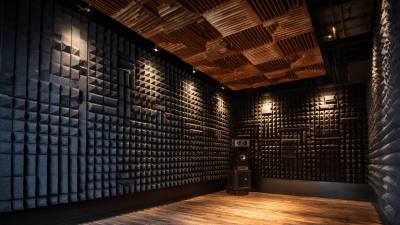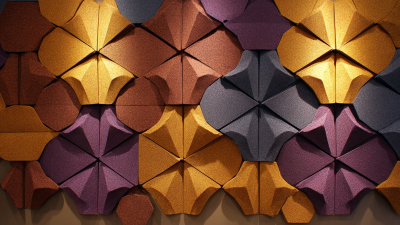In today’s increasingly noisy world, the importance of soundproofing our living and working spaces cannot be overstated. Choosing the best sound proof panels is essential for creating a harmonious environment that promotes relaxation, focus, and productivity. Whether you are looking to reduce ambient noise in a home office, keep sound from disturbing family members in a living room, or enhance acoustics in a recording studio, selecting the right soundproofing solution requires careful consideration. In this guide, we will explore the top strategies for choosing the best sound proof panels tailored to fit every room’s unique needs. From material composition and design aesthetics to installation techniques and cost-effectiveness, understanding these factors will empower you to make informed decisions that significantly improve your space’s sound quality. Join us as we delve into the nuances of soundproofing and uncover the ideal options for your specific requirements.

When it comes to choosing soundproof panels, understanding the different types available is crucial for achieving optimal acoustic performance in any room. The most common types include foam panels, which are lightweight and easy to install, making them ideal for home studios and bedrooms. They are great at reducing high-frequency sounds. Then, there are fabric-wrapped panels that not only offer excellent sound absorption but also come in various colors and patterns, allowing you to enhance your decor while improving acoustics. Additionally, mass-loaded vinyl panels are perfect for areas needing significant sound isolation, such as music rooms or home theaters, due to their dense composition.
Tips: When selecting soundproof panels, consider the specific needs of your space. For high-traffic areas, a combination of foam and fabric panels can strike a balance between aesthetics and sound absorption. Moreover, always check the NRC (Noise Reduction Coefficient) rating before purchasing, as this indicates how effective the panels will be at absorbing sound. Installing panels strategically—such as in corners or on walls facing noise sources—can further enhance their effectiveness.
When selecting soundproof panels, it's crucial to assess the acoustic needs of each room type. For instance, in home theaters, where pristine sound quality is paramount, thicker panels with higher density can significantly reduce echo and sound leakage. Acoustic panels with a high NRC (Noise Reduction Coefficient) rating are ideal for absorbing sound waves, creating a more immersive experience. Additionally, consider placing bass traps in corners to manage low-frequency sounds effectively.
In contrast, the needs of a home office may differ significantly. Here, clarity of voice during calls and meetings is essential. Therefore, lighter panels with a focused design can help minimize the reflection of sound without over-dampening the space. Strategically placing panels on walls and the ceiling can enhance speech intelligibility while still allowing for a comfortable working atmosphere. By thoughtfully assessing each room's specific acoustic requirements, you can select the best soundproof panels tailored to enhance each environment's functionality and comfort.

When it comes to selecting the best soundproof panels for your space, the choice of materials and design cannot be overstated. According to a report by the Acoustical Society of America, sound absorption materials can reduce noise levels significantly, with high-density foam panels showing an absorption coefficient of up to 0.90 in the mid to high-frequency range. This means that using materials like polyurethane foam or mineral wool can effectively dampen sound reverberations, making them ideal for rooms designed for music production or quiet work.
In addition to material choice, design plays a crucial role in achieving optimal soundproofing. Panels that are strategically shaped and arranged can enhance acoustic performance. For instance, panels with a convex or angled surface can diffuse sound waves more effectively than flat surfaces, as highlighted in a study by the Architectural Acoustics Group. Furthermore, aesthetic considerations can guide the selection of colors and textures that complement the room’s decor while maintaining soundproofing efficiency. Thus, a thoughtful combination of effective materials and innovative design will ensure that the soundproof panels not only serve their functional purpose but also contribute to the overall aesthetic of any room.
When selecting soundproof panels for various rooms, effective budgeting strategies are crucial to ensure high-quality acoustic solutions without overspending. According to recent industry reports, including one by the Acoustical Society of America, the average cost of soundproofing materials can range from $2 to $5 per square foot, depending on the type of material and its effectiveness. Investing in panels that incorporate advanced features, such as phase change materials (PCM), can improve both sound absorption and energy efficiency, making them a smart choice for long-term savings.

Tips: When shopping for soundproof panels, consider bulk purchasing options that can significantly reduce overall costs. Look for panels that combine acoustic and thermal control, which can serve dual purposes and further justify the investment. Additionally, assessing the unique soundproofing needs of each room will allow you to allocate your budget more effectively. For example, a home theater may require denser materials, while a standard office space could benefit from lighter solutions.
As the demand for acoustic solutions increases, facility managers must adapt to evolving challenges. Implementing smart acoustic and vibration strategies can enhance both the functionality of precision tools and the comfort of researchers working in demanding environments. Ultimately, by carefully choosing and budgeting for soundproof panels, you can achieve an optimal balance between quality and cost across any room in your property.
When it comes to installing soundproof panels, maximizing sound absorption efficiency is key. First, consider the placement of the panels. Arrange them at the first reflection points, which are usually located on the walls and ceiling where sound waves bounce off before reaching your ears. A good rule of thumb is to place these panels at ear level for optimal results. Additionally, covering corners with bass traps can significantly reduce low-frequency sounds, enhancing the overall acoustic performance of the room.
Another important aspect is choosing the right type of soundproof panels. Look for materials with high NRC (Noise Reduction Coefficient) ratings that indicate their effectiveness in absorbing sound. Fabrics, foam, and specialized acoustic panels can vary greatly in their performance, so select based on the specific sound frequencies you aim to control. Ensure that the panels are securely mounted using appropriate adhesives or hardware for longevity and effectiveness. Taking these installation tips into account will help you create a quieter, more enjoyable environment in any room.
| Room Type | Recommended Panel Type | Thickness (inches) | Installation Method | Sound Absorption Coefficient |
|---|---|---|---|---|
| Home Theatre | Acoustic Foam Panels | 2 | Adhesive or Mounting Hardware | 0.80 |
| Recording Studio | Mineral Wool Panels | 4 | Framing or Direct Mount | 0.95 |
| Office Space | Fabric-Wrapped Panels | 2 | Wall Mounting or Velcro | 0.70 |
| Music Room | Bass Traps | 6 | Corner Placement | 0.75 |
| Library | Wooden Acoustic Panels | 1 | Screw or Adhesive | 0.60 |






